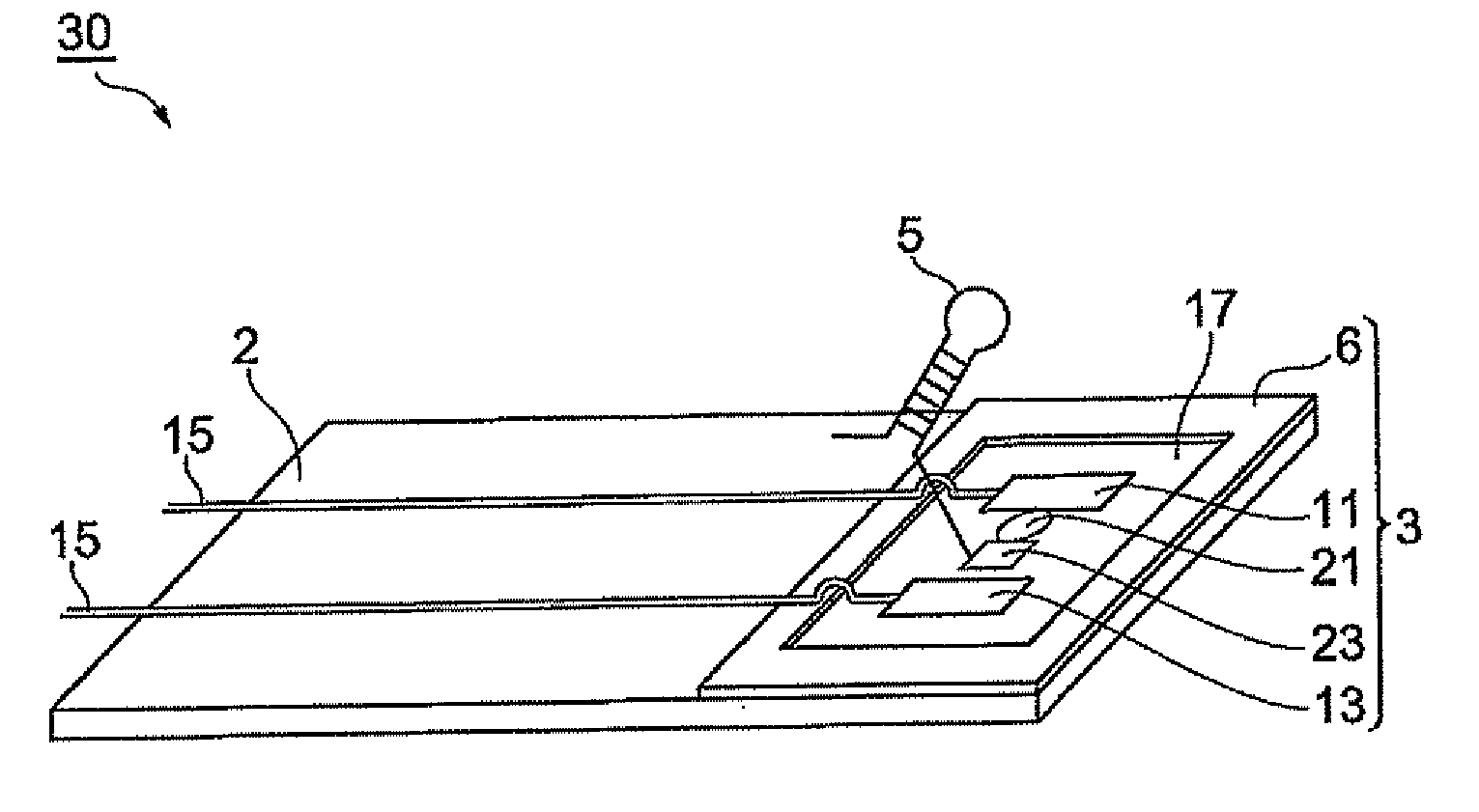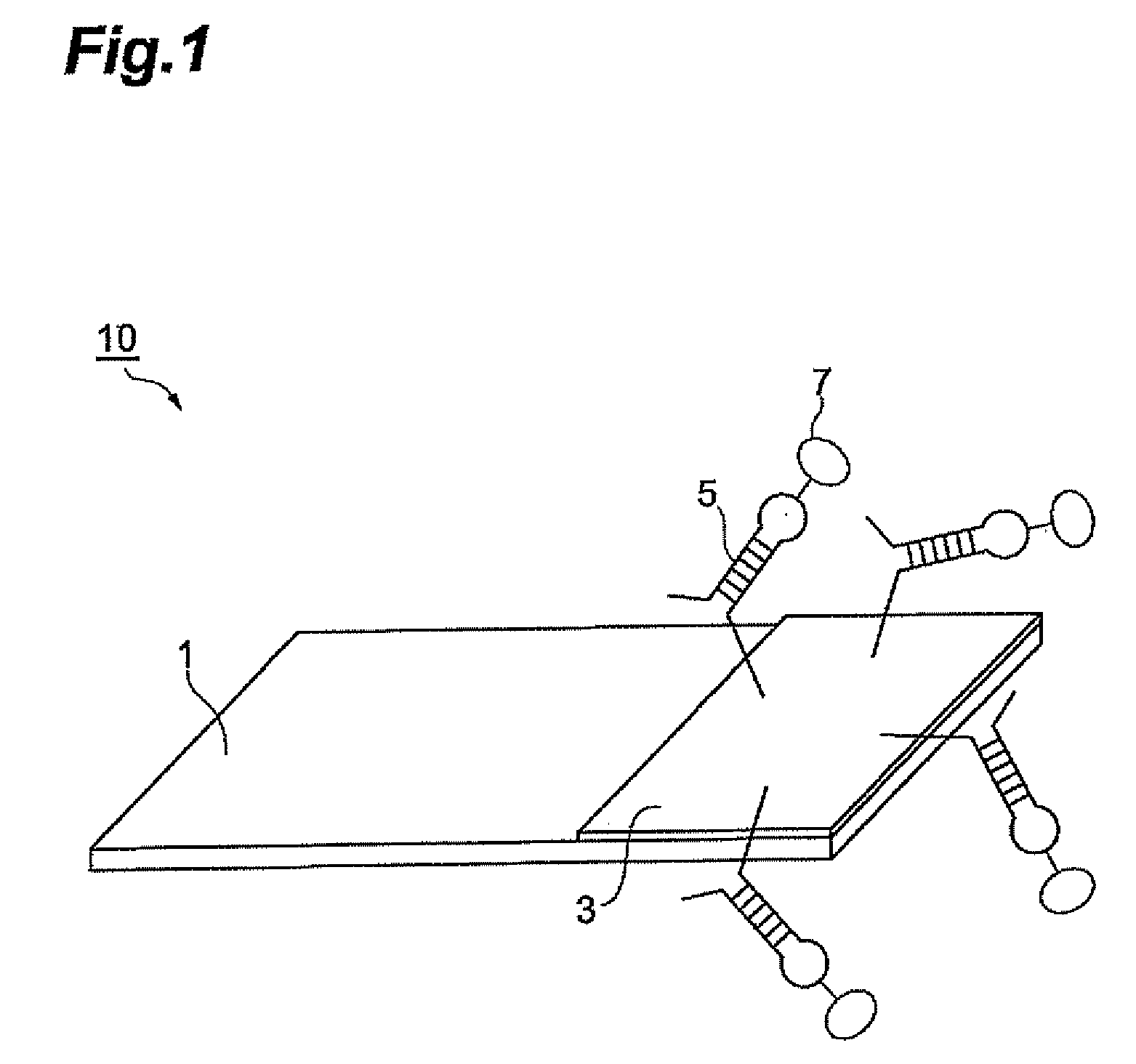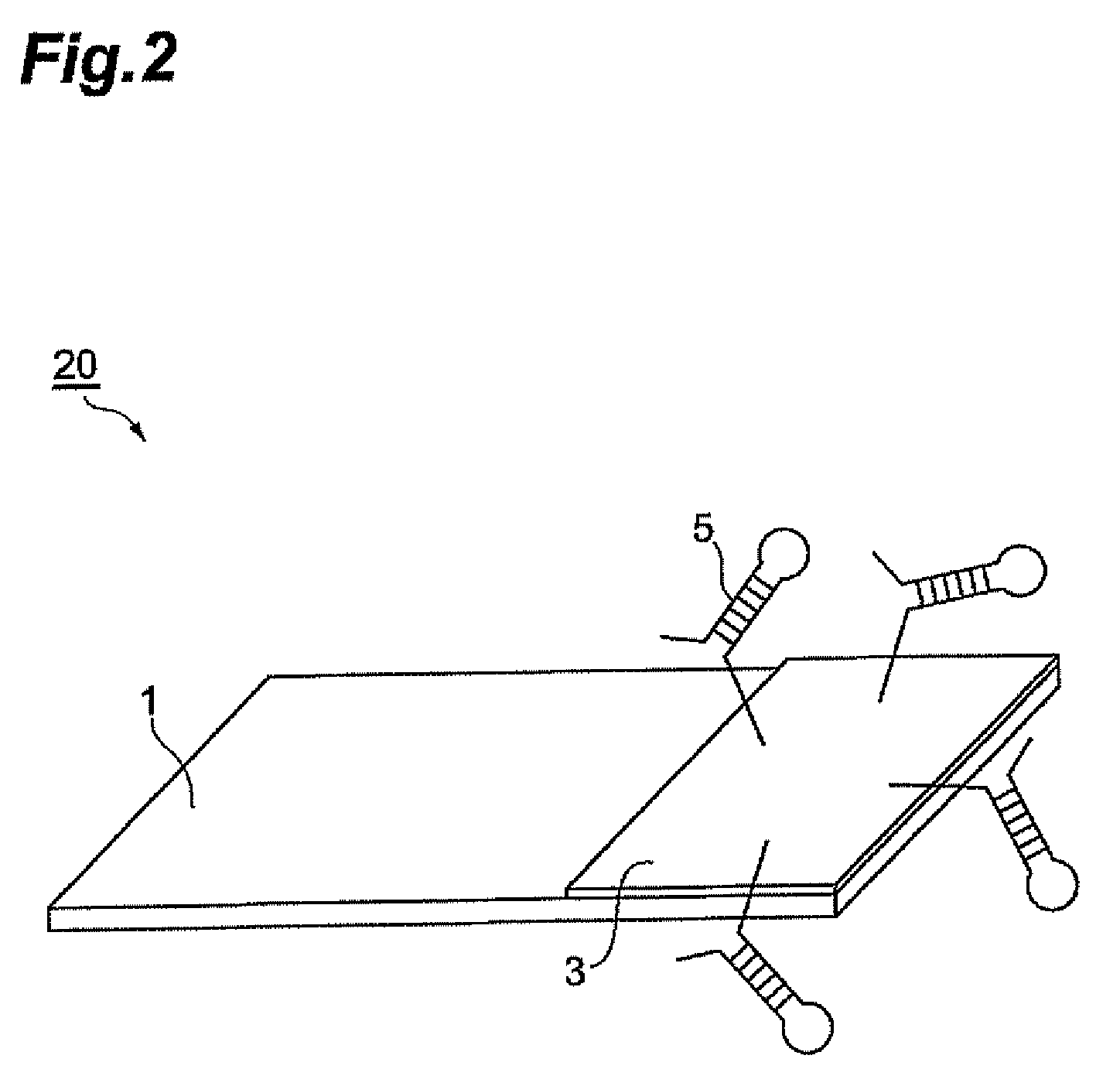Biosensor
a biosensor and sensor technology, applied in the field of biosensors, can solve the problems of inability to detect, difficult to achieve, and difficult to obtain analysis results,
- Summary
- Abstract
- Description
- Claims
- Application Information
AI Technical Summary
Benefits of technology
Problems solved by technology
Method used
Image
Examples
example 1
[0068]Screening of Aptamers that Bind Specifically to Streptococcus mutans
[0069]Streptococcus mutans pac (SEQ ID NO: 13) was selected as a bacterial cell surface molecule specifically found on Streptococcus mutans, and aptamers that specifically bind to this protein were screened.
[0070]First, the nucleotide sequence of Streptococcus mutans pac represented by SEQ ID NO: 13 of the Sequence Listing, as the aptamer-binding site, was processed with a computer evolution program to generate 10 generations of nucleotide sequences on the computer, and the nucleotide sequences were used as candidate Streptococcus mutans-binding aptamers. The computer evolution program was written with Visual Basic using a common genetic algorithm with reference to the one by Ikebukuro Nucleic Acids Res., 2005, Vol. 33, e108).
[0071]Next, oligo DNA consisting of the candidate nucleotide sequences was chemically synthesized, and those exhibiting specific binding for Streptococcus mutans were recovered as aptame...
example 2
[0073]Detection of Streptococcus mutans with Aptamer(s)
[0074]Detection of Streptococcus mutans by ELISA was attempted, using S. mutans-binding aptamer(s) instead of anti-Streptococcus mutans antibody.
[0075]First, Streptococcus mutans was suspended in PBS and cell suspensions of different concentrations (1×104, 1×105, 1×106, 1×107, 1×108 and 1×109 CFU / mL) were prepared. The prepared cell suspensions were added in 100 μL aliquots to each well of a poly-L-lysine-coated 96-well plate, and were incubated for a prescribed period of time to fix the cells at the bottoms of the wells.
[0076]To each of the cell-fixed wells there was added 50 μg of the biotin-labeled S. mutans-binding aptamer(s) prepared in Example 1, and after incubation at 25° C. for 1 hour, they were rinsed with PBS to remove the biotin-labeled S. mutans-binding aptamer(s) that had not bound to the cells.
[0077]Next, HRP-labeled steptavidin was added to each well, and after incubation at 25° C. for 1 hour, each well was thoro...
example 3
[0087]Detection of Streptococcus mutans with Biosensor Comprising S. mutans-Binding Aptamer(s) in Substrate Recognition Element (Electrochemical Method)
[0088]A sensor was constructed with electrolyte solution in a 3-electrode type electrochemical cell comprising a working electrode having the S. mutans-binding aptamer(s), alkanethiol and ferrocene immobilized on the electrode, and a counter electrode and a reference electrode, and was used to detect Streptococcus mutans in a test sample.
[0089]First, biotin-labeled alkanethiol was bonded to the surface of the gold electrode and the gold electrode was rinsed with PBS, and then the avidin-labeled ferrocene was bound to the alkanethiol by biotin-avidin reaction, the gold electrode was again rinsed with PBS, and finally the biotin-labeled S. mutans-binding aptamer(s) prepared in Example 1 was bound to the ferrocene by biotin-avidin reaction to form the working electrode (substrate recognition element).
[0090]A 3-electrode type electrochem...
PUM
| Property | Measurement | Unit |
|---|---|---|
| fluorescent wavelength | aaaaa | aaaaa |
| fluorescent wavelength | aaaaa | aaaaa |
| fluorescent wavelength | aaaaa | aaaaa |
Abstract
Description
Claims
Application Information
 Login to View More
Login to View More - R&D
- Intellectual Property
- Life Sciences
- Materials
- Tech Scout
- Unparalleled Data Quality
- Higher Quality Content
- 60% Fewer Hallucinations
Browse by: Latest US Patents, China's latest patents, Technical Efficacy Thesaurus, Application Domain, Technology Topic, Popular Technical Reports.
© 2025 PatSnap. All rights reserved.Legal|Privacy policy|Modern Slavery Act Transparency Statement|Sitemap|About US| Contact US: help@patsnap.com



